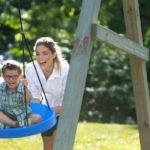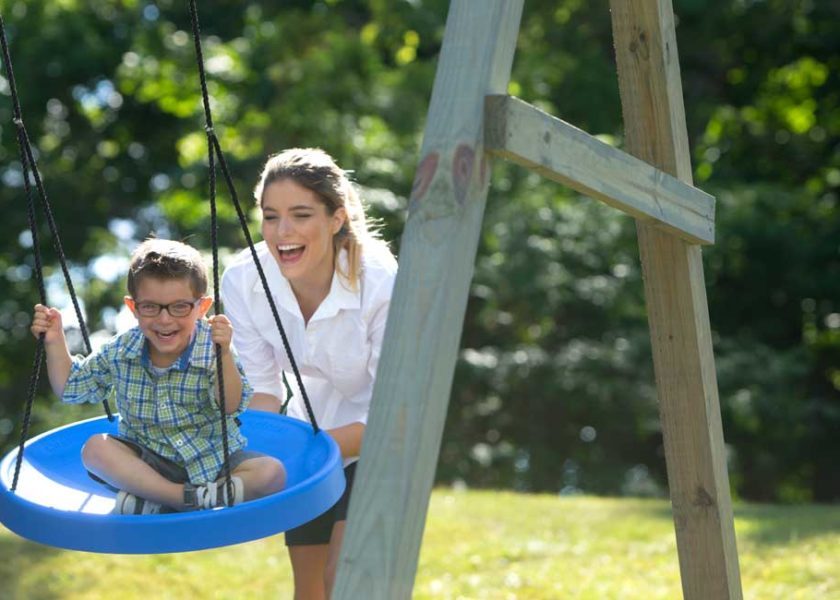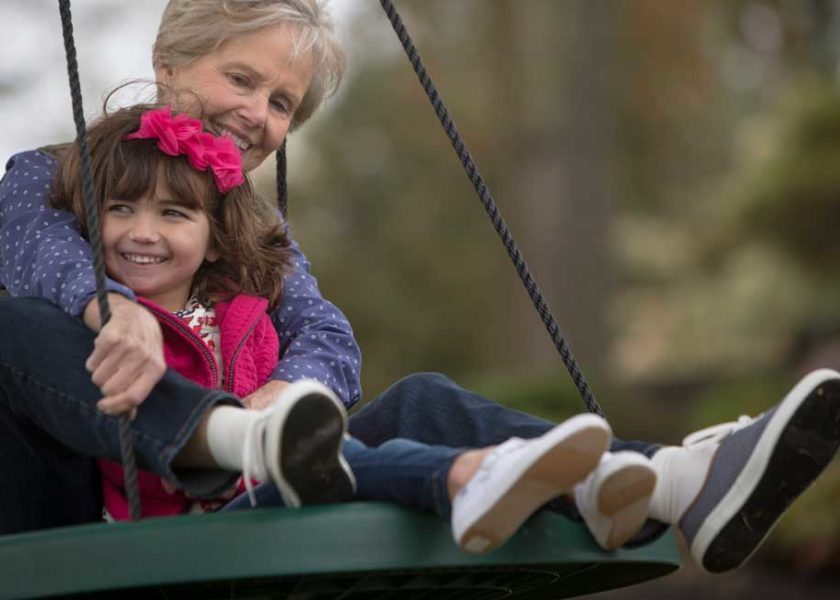The Centers for Disease Control (CDC) reports that 1 in 86 children in the U.S. is born with a condition that falls somewhere within the Autism spectrum. This spectrum ranges from minor forms of the disorder, which allow children to enjoy a high level of functionality, to serious forms which require therapeutic intervention. However, the intervention doesn’t always have to take place in clinical settings. In fact, it can occur in the child’s backyard with the use of a special autism therapy swing.
What Are the Signs of Autism?
Because children are generally seen as living in their own imaginary worlds that don’t make much logical sense to adults, it can take a while for signs of autism to become noticeable. With that said, there are some patterns adults can look for. Clinicians who work with autistic children often list the following set of indicators as being highly suggestive of early autism:
- Infrequent direct eye contact.
- Tendency not to smile when smiled at.
- Difficulty with verbal and nonverbal communication.
- Difficulty relating to others and the world around them.
- Difficulty with changing thought and behavioral patterns.
- Body language developing more slowly than that of other children.
- Tendency not to reciprocate physical affection or pick up on physical cues—for example, not reaching out to be picked up by adults.
Parents may notice some of these tendencies in children who don’t have autism, particularly pre-school children and children at home who aren’t yet old enough for school. That’s why it’s important to have an autism diagnosis confirmed by a physician or a psychologist who specializes in treating the condition. If you receive a diagnosis that indicates the disorder, you might consider the use of an autism therapy swing.
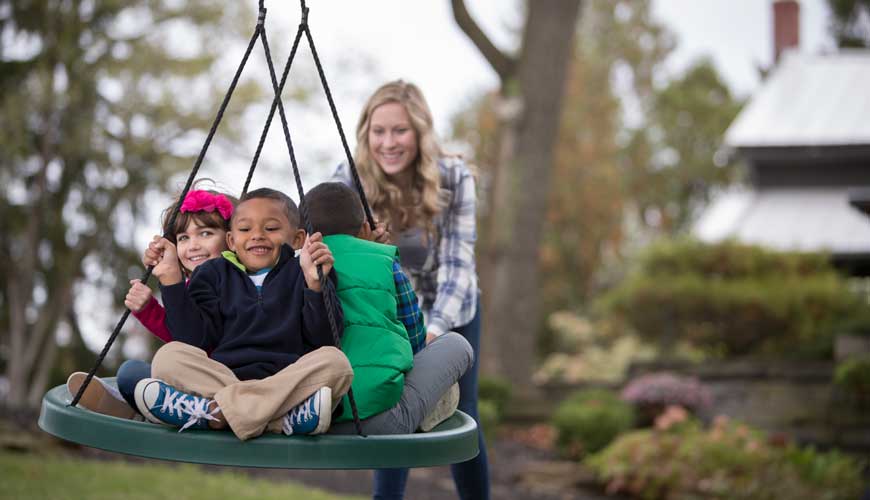
Why is Swing Therapy So Important?
Autism is well-known for presenting challenges that parents with neurotypical children may not have to handle. In terms of the treatment options available, however, having autism today can be much different than it was several years ago. As a result of an increasing awareness of autism’s diverse symptoms in recent years, new types of therapies have emerged, one of the simplest and most affordable of which is swing therapy.
You might think that placing an autistic child on a swing may only seem to temporarily entertain them, but the act of swinging itself can actually provide therapeutic benefits. Swing therapy is a way of supplementing an autistic child’s clinical therapy in a way that is fun for the child and encourages their prolonged participation.
Swinging can be a valuable part of an autistic child’s daily routine for several reasons. Exercise that releases endorphins that can improve the child’s mood is perhaps the most obvious, but the benefits don’t end there. Below are five well-established, clinically realized benefits of making swinging a part of the child’s routine on an ongoing basis.
1 – Swinging Improves Sensory Integration
When it comes to the five senses—sight, smell, touch, hearing, and taste—most of us combine our sensory signals into a single experience, a process known as sensory integration. Autistic children, however, have more difficulty doing so, and can sometimes get overwhelmed trying to process several different types of stimulation at once. Routinely swinging on a swing can help strengthen their sense of sensory integration.
In developing sensory integration, we rely on our senses of balance and proprioception. The vestibular system, found in the inner ear, lets us perceive whether we are in motion and, if so, helps us determine in which direction we are traveling (up and down, back and forth, side to side, and so on). Proprioception is the sense of knowing where our body parts are located in relation to each other. The movement that occurs from swinging helps an autistic child strengthen the ties between their nerve endings and brain, and having those strong connections makes it easier for their brain to associate the motion of the swing with the sound of the wind, the sight of the sky seeming to move up and down, and so on. The more frequently a child use an autism therapy swing, the stronger the associations become.
2 – Swinging Promotes Exercise and Bonding
Before an autism specialist diagnoses their child’s condition and explains its behavioral symptoms, parents of autistic children are often perplexed about why they find it difficult to physically and emotionally bond with them. Involving their child in a regular swinging routine can significantly encourage the bonding process.
In addition to encouraging strengthening sensory integration in autistic children, swing therapy can promote physical and emotional bonding between an autistic child and his or her parents. Studies have shown that, despite their tendency to isolate themselves, many autistic children experience a strong attachment to their guardians. Swing therapy helps intensify that bond by providing fun, safe, physical activity that brings physical and emotional bonding to the forefront.
3 – Swinging Promotes Calming and Soothing
Because of their difficulty relating to the world around them, autistic children often experience a low level of comfort and safety in relation to their physical surroundings. The physical activity of using an autism therapy swing encourages the child to feel calm and soothed, which parents of autistic children will wish to encourage in the daily life of their little ones. Using an autism therapy swing promotes consistent, rehabilitative stress relief through repetitious swinging, especially in a home environment where the child feels safe.
4 – Swinging Encourages Play With Other Kids
Autistic children are sometimes portrayed as “loners” who like to be involved in their own private play-world apart from other kids. Once your child achieves a comfort zone with using a swing, other children, starting with the child’s siblings, can be gradually introduced into the play setting. This will help them develop strong, trusting relationships with people other than his or her parents or guardians.
A perceived social barrier can be a proverbial Great Wall of China to some autistic children. When an autistic child becomes accustomed to playing with others in his or her backyard, the increasing level of comfort can translate into welcoming others into their circle during school activities.
5 – Swinging Promotes Other Play Equipment
A swing may be an autistic child’s first, enjoyable introduction to play equipment, but chances are that his or her parents don’t want the association to end there—and it doesn’t have to. In many cases, the goal is to introduce play equipment in a comfortable, family environment, and then leverage the child’s comfort with the equipment to introduce other equipment that involves sociable play opportunities, particularly on the school playground and in nearby parks.
If your child is on the high end of the autism spectrum, the transition may involve some stops and starts in pursuit of the ultimate goal, but you can start the process where the child feels most comfortable first using play equipment: at their home, in the presence of trusted parents, relatives, and siblings. From there, you can move on to other play equipment that encourages more interaction.
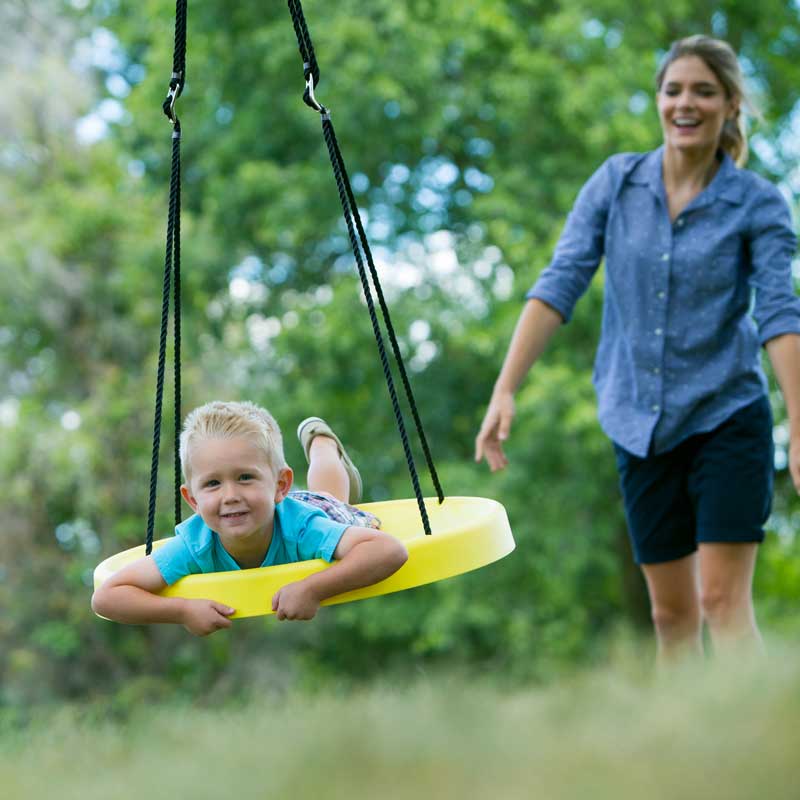
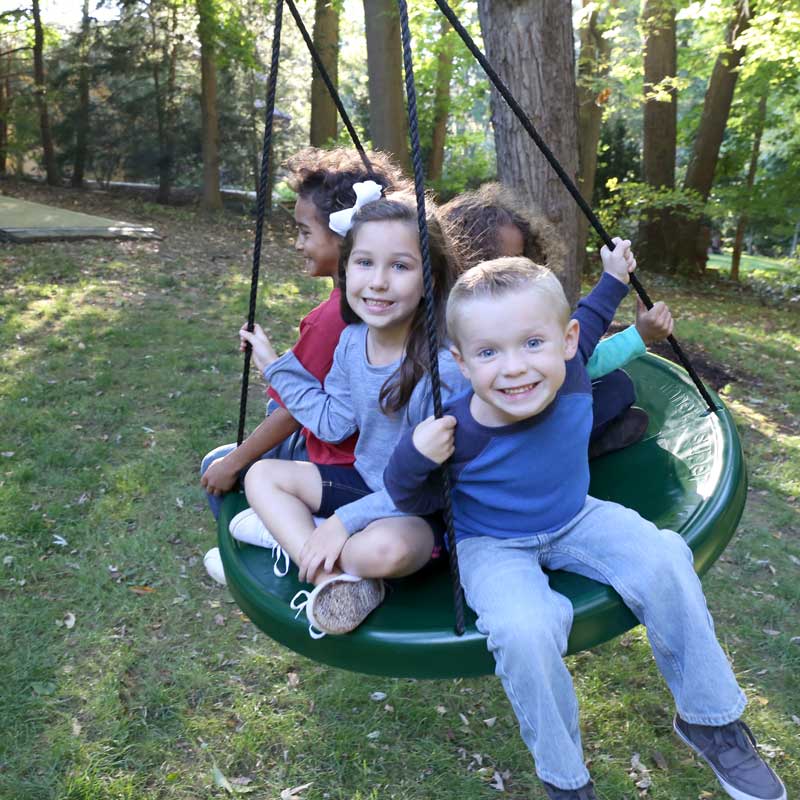
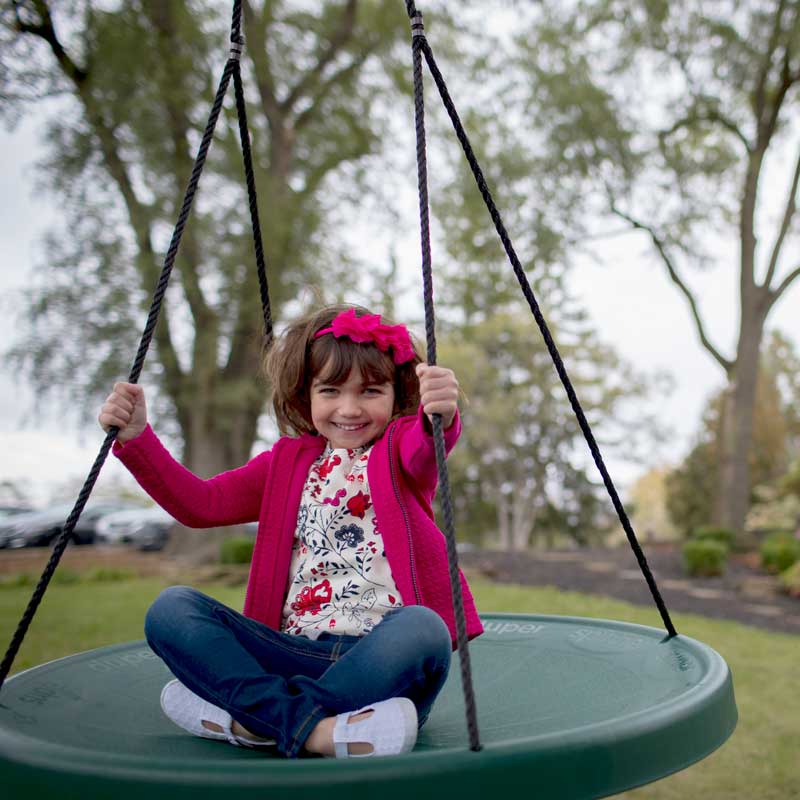
Choosing a Good Autism Therapy Swing
If you’re the parent of an autistic child, and you live in in an urban area or a well-populated rural location, there’s probably have no shortage playgrounds where you could take your child to participate in swinging. However, because the autistic tend to experience maximum calm and stress relief when they use a swing placed in familiar home settings, the best option is to implement a swing in or near your child’s home.
With its simple home installation process, the Super Spinner swing is an excellent solution. Parents can choose from any of six colors to find the one that their child feels most comfortable with, and soon enough their child can start having fun and gaining the therapeutic benefits mentioned above.
Because of the Super Spinner’s durable, all-weather construction and its durable, cupped plastic seat that helps children stay in a safe position, parents can also feel confident in their child’s safety during use. Kids can clutch any of the four synthetic ropes for balance as they swing, and durable metal components that hold the swing together and attach it to the swing bar. The result is an impeccably designed swing that can help autistic children build motor skills, comfort with their surroundings, and social bonds.
To inquire about our products, or to place an order, please call us today at (330) 333-0555 or use the contact form on our website. Whether your child is autistic or not, the Super Spinner swing is sure to deliver hours of swinging fun.


